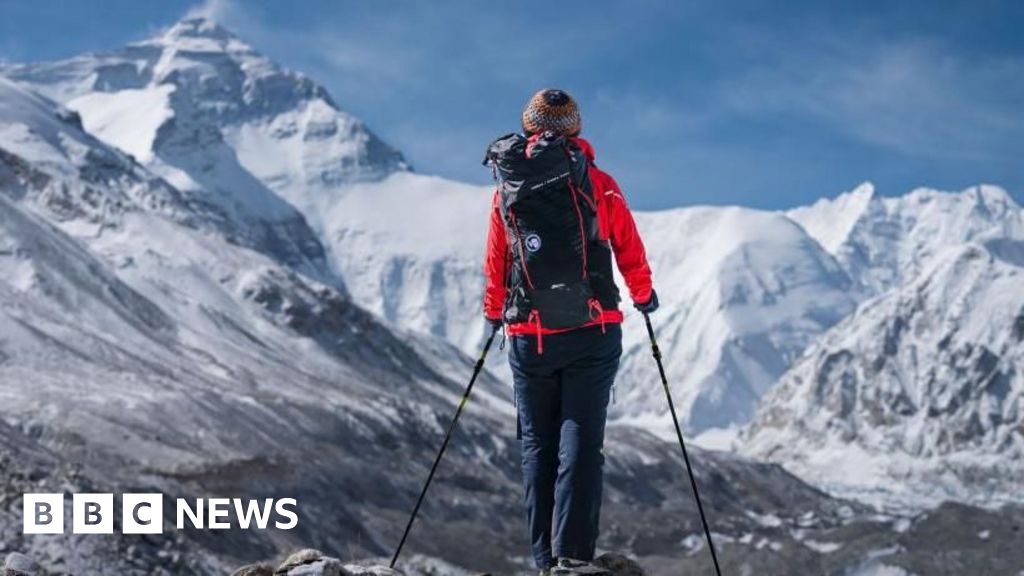
Clear skies, calm winds, and panoramic views of snow-draped Himalayan peaks have long attracted autumn hikers to Mount Everest. However, this idyllic scene is increasingly being disrupted by severe weather conditions. Meteorologists report that the monsoon season now extends into autumn, traditionally the peak season for mountain tourism. This shift has resulted in at least one episode of extreme rainfall nearly every year for the past decade, rendering mountain weather perilous.
Last weekend, a sudden blizzard stranded hundreds of tourists near the eastern face of Everest, subjecting them to freezing temperatures at altitudes exceeding 4,900 meters (16,000 feet). By Tuesday, nearly 600 trekkers had been guided to safety, according to Chinese state media. Tragically, one person succumbed to hypothermia and altitude sickness, though the others were reportedly in good condition.
Impact on Both Sides of Everest
While the incident occurred on the Tibetan side, a similar tragedy unfolded on the Nepal side, where a South Korean mountaineer lost his life on Mera Peak. Communication lines were severely impacted by torrential rains and heavy snowfall, delaying the dissemination of news. Officials estimate that landslides and flash floods have claimed approximately 60 lives in the region over the past week.
Riten Jangbu Sherpa, a seasoned mountain guide, remarked on the unusual weather patterns, stating, “This is highly unusual for October when we expect the skies to remain clear.” He noted that trekkers have increasingly faced unexpected extreme weather, which has “hampered our trekking and mountaineering business.”
Changing Monsoon Patterns
The monsoon season in northern India and Nepal traditionally spans from June to mid-September. However, Archana Shrestha, deputy director general at Nepal’s Department of Hydrology and Meteorology, noted a significant shift. “Our data shows that most of the years in the past decade have had monsoons lasting until the second week of October, which is definitely a change,” she explained.
The tail end of the monsoon now brings heavy rain and snow, as evidenced on October 4 and 5. Shrestha described this pattern as “damaging precipitation in a short span of time.” Such extreme weather in the Himalayas translates to blizzards and snowstorms, posing a significant risk to trekking, mountaineering, and tourism.
Weather Systems and Their Effects
The sudden weather shift last weekend saw winds howling, temperatures plummeting, and visibility dropping drastically. The once navigable road became impassable, buried under snow. On Cho Oyu, another Himalayan peak, a team of climbers retreated temporarily due to relentless snowfall. Expedition operator Mingma Sherpa confirmed, “Now they are back after the heavy snowfall ended.”
For those trapped near Everest, the journey back was fraught with danger. Some trekkers reported battling hypothermia despite wearing warm clothing, while others feared being buried under the heavy snow. A coordinated rescue effort, involving yaks and horses to clear the snow, prevented further tragedy.
“I’ve never experienced weather like this,” one seasoned trekker told the BBC, highlighting the unprecedented nature of the conditions.
Climate Change and Future Implications
Scientists attribute these changes to increased moisture in the air due to global warming. This results in torrential rains over short periods, unlike the past when monsoon showers were more evenly distributed. “The weather at this time of the year has been changing every year in recent years, we can’t promise our clients anything,” said Passang, a travel agent in Lhasa.
Weather experts suggest that the monsoons in South Asia have intensified due to interactions with another weather system known as the westerly disturbance. This low-pressure system, originating in the Mediterranean, brings cold air and occasional snow to northern India, Pakistan, and Nepal. When it meets warmer, wetter monsoon air, the result can be extreme weather.
“Westerly disturbances can effectively turbocharge the monsoon,” explained Akshay Deoras, a weather scientist at the University of Reading in the UK.
Traditionally a winter phenomenon, these disturbances are now occurring earlier, during the monsoon and autumn. The recent deluge in eastern Nepal was attributed to a westerly disturbance fueling a low-pressure system from the Bay of Bengal, pushing clouds eastward instead of westward.
As climate patterns continue to evolve, the implications for the Himalayan region’s tourism and safety are profound. Stakeholders are urged to adapt to these changes, ensuring the safety of adventurers and the sustainability of the region’s tourism industry.







